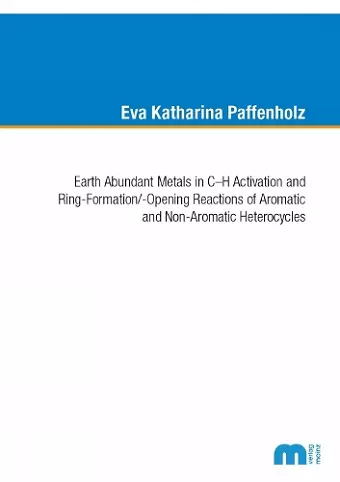Earth Abundant Metals in C-H Activation and Ring-Formation/-Opening Reactions of Aromatic and Non-Aromatic Heterocycles
Format:Paperback
Publisher:Verlag G. Mainz
Published:28th Sep '20
Should be back in stock very soon

In the last decades, C–H activation became an increasingly powerful tool for C–C bond formation. It provided a valid alternative to conventional cross coupling reactions with maximised atom- and step-economy for synthetic reactions. Even though a lot of great advances have been made, some challenges in C–H activations remain. C–H bonds are highly stable (110 kcal/mol), often harsh reaction conditions are needed to break the bond and form a new C–C compound. Furthermore, regioselectivity has been proven to be a difficult issue since a number of C–H bonds are present in organic molecules. Also, chemoselectivity still remains a difficulty to overcome in C–H activation reactions. Many groups focus their research on developing mild reaction conditions that proceed at “ambient temperature, neutral conditions and in absence of strong oxidants or reductants”.[1b] By choosing milder reaction conditions also problems of selectivity can be managed. In general, the catalytic cycle of C–H activation reactions follows four reaction steps: first is the C–H activation itself, where a substrate binds to the metal that catalyses the reaction process (I). Next is the functionalisation of the organometal intermediate with an appropriate reaction partner (II). By releasing the product (III) and regeneration of the catalyst, e.g. with an oxidant (IV), the catalytic cycle is closed.
ISBN: 9783958863699
Dimensions: unknown
Weight: 258g
186 pages